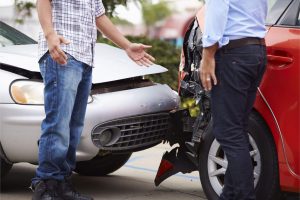 Car accidents are terrifying. When you get into a car accident your adrenaline is heightened and your mind begins to race all over the place. Even if it’s a simple fender bender, it’s hard to remember the details when you are shaken up. For these reasons and more, it’s a good idea to have a plan in the event you get in a car accident.
Car accidents are terrifying. When you get into a car accident your adrenaline is heightened and your mind begins to race all over the place. Even if it’s a simple fender bender, it’s hard to remember the details when you are shaken up. For these reasons and more, it’s a good idea to have a plan in the event you get in a car accident.
Putting together a car accident procedure guide before you’re in an accident is smart. This way, if you ever do find yourself in this scary situation, then you’ll know exactly what to do.
Keep reading to find out recommended actions to take after being involved in a car accident.
Car Accident Guide
1. Stop
Whether it’s your fault or not, stop at the scene. It’s illegal to flee the scene of a car accident.
Even if the accident was minor, never leave. Any kind of car accident, minor or major, requires necessary post-accident steps.
If you get in an accident and you leave the scene, an investigation will take place. Surveillance footage around the area of the accident will be checked. And any witnesses can give statements. It’s important to protect yourself.
2. Find Safety
Immediately find safety. Remaining in the vehicle where the accident took place may not be safe, but neither is getting out of your car in major traffic. Other cars traveling at high speeds may not be aware of the incident. They may keep traveling close by at high speeds. There’s always the possibility that other vehicles may end up becoming involved in the accident as well. If you can safely get out of your car and completely off of the road, it’s best to do so. If you are in major traffic, put your hazard lights on and go to the shoulder if possible. Be sure to wait to safely exit the car, especially on highways and interstates.
If possible, place flares around your car. You should always carry flares in the case of an accident, especially if it’s dark and you are on a road or highway that doesn’t get lots of traffic. Flares help to warn other drivers of the accident.
3. Determine Injuries
Once the accident has happened, take a deep breath and try to gain your composure.
Determine if you or any of your passengers have injuries related to the accident. If anyone is injured, call 911 immediately.
Children should be checked thoroughly, and if you suspect an injury it’s best not to move them if possible. If there’s another adult in the vehicle with you, you should check one another.
NEVER tell the other party you are not injured. You might feel okay at the scene of an accident, but you may need to see a doctor before you can determine if you are injured or not.
4. Call 911
Call the police even if the accident isn’t a major one. In some cases, witnesses may contact the police before you get the chance to. Police might even arrive on the scene while you’re still assessing injuries.
If you’ve completed the first three steps and there are no police or paramedics in sight, then make the call. Paramedics may also arrive to help any with any injuries.
Even if there are no injuries, it’s important to call the police and have them make a police report. The report will tell exactly what happened, and it will state if any party involved in an accident received a citation. Both parties’ insurance companies will want a copy.
5. Take Pictures
Use your cell phone to take pictures. Insurance companies will also ask for pictures of any damages to your vehicle. Pictures also come in handy for showing exactly where one car hit the other and how it happened.
Photos are good to have, regardless if you were at fault or not. If the other party’s vehicle undergoes any other type of damage between the time of the accident and the time an insurance adjuster completes an estimate, they can’t claim that you caused it. Pictures prove what kind of damage your car and the other party’s car had at the time of the accident.
6. Exchange Information
Always exchange information with the other party. Write down their name, address, insurance information, and vehicle information. Another good idea is to take a picture of their insurance card front and back, and their driver’s license information if they will share it with you.
The insurance card will have the name and number of their insurance company. It will also have their name and vehicle’s information on it. Your insurance company will need to know all of this.
7. Report A Claim
Now it’s time to report the claim. You’ve stopped for the accident, ensured everyone’s safety, and contacted the authorities. You’ve collected the other party’s information so you have everything you need.
Pull out your own insurance card and contact your auto insurance company. Because you’re prepared, the process will be fairly simple. Give them all of the information that you’ve collected, including the pictures.
Some insurance companies have an option for you to upload pictures onto your online account. Once you’ve given them everything they need, the claim process begins.
8. Seek Medical Attention
Don’t wait to seek medical attention. If you didn’t have an ambulance or someone else take you to the hospital directly from the scene, then you’ll want to schedule a visit with your doctor immediately. The longer you wait, the more you might be hurting your case.
It’s important to seek medical attention after a car accident even if you don’t believe you’re hurt. There might be injuries that you’re not aware of.
Car Accident Preparedness
Always be prepared before a car accident occurs as it makes it easier to know what to do should one occur. Follow this guide to relieve post-accident stress, maybe make a copy or note the steps and put it with your insurance card in your glove box.
If you need auto insurance today or want to compare pricing, then get a free auto insurance quote today! Contact Kicker Insures Me Agency if you have any other questions, we are here to help.
